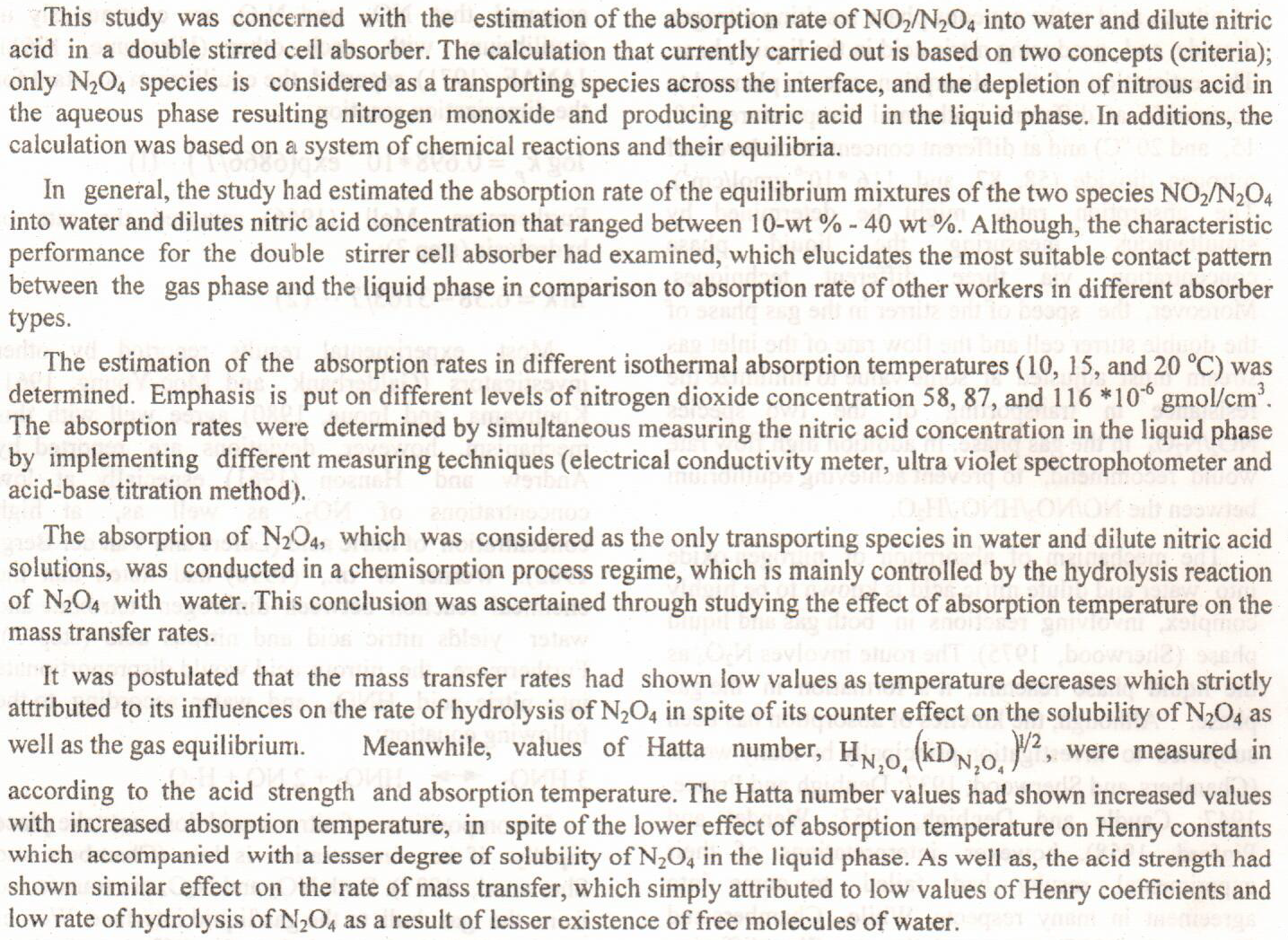
This study was conducted to study the cytogenetic effect of both alcoholic and water extracts of propolis on mice. Three different samples of propolis were collected from three different regions of Iraq (Najaf, Arbil and Baghdad) to be used in this study. The cytotoxic effect of two different doses of each extracted sample was measured by employing cytogenetic analysis which included (mitotic index (MI), chromosomal aberrations (CAs), micronucleus index (MN) and sperm abnormalities). Results showed that significant increase in MI and significant reduction in MN, CAs and sperm abnormalities percentage were seen after treatment with both alcoholic and water extract of the three samples when compared with negative control, and alcoholic extrac
... Show More (9)
(9)
Various nutritional solutions given to patients contain amino acids. Possible interference of this supplementation with selected aminoglycoside antiboiotics, namely gentamycin and streptomycin was evaluated in vitro. In minimal medium, E.coli was inhibited by gentamycin and by streptomycin. Circumvention of this inhibition was obtained with a mixture of 20 amino acids in the medium. Deletion of amino acids revealved that circumvention. specific amino acids were required for such Deletion of the aromatic amino acids or cysteine abolished the protection against gentamycin and streptomycin, while the deletion of the branched chain amino acids abolished the protection against streptomycin only. Thereonine, on the other hand, appears to be essen
... Show MoreThe purpose of this work is to concurrently estimate the UVvisible spectra of binary combinations of piroxicam and mefenamic acid using the chemometric approach. To create the model, spectral data from 73 samples (with wavelengths between 200 and 400 nm) were employed. A two-layer artificial neural network model was created, with two neurons in the output layer and fourteen neurons in the hidden layer. The model was trained to simulate the concentrations and spectra of piroxicam and mefenamic acid. For piroxicam and mefenamic acid, respectively, the Levenberg-Marquardt algorithm with feed-forward back-propagation learning produced root mean square errors of prediction of 0.1679 μg/mL and 0.1154 μg/mL, with coefficients of determination of
... Show MoreSome microorganisms can produce nanocellulose, which is known as bacterial nanocellulose (BNC); the most active bacterial producer is acetic acid bacteria (AAB), which is a gram-negative, motile and obligate aerobic belongs to the family Acetobacteraceae. Bacterial nanocellulose has excellent attention in medical (surgical domain), industrial and pharmaceutical fields because of its flexible properties, characteristics and advantages. So, in this study, the AAB (5AC) isolate was isolated from apple vinegar. The production of BNC was performed by using a natural medium called palm dates liquid medium, the produced bacterial Cellulose was purified by using the sodium hydroxide method; it was observed that the wet weight of the BNC was a
... Show More (3)
(3)
This work aimed to use effective, low-cost, available, and natural adsorbents like eggshells for removal of hazardous organic dye result from widely number of industries and study the influence of different eggshell particle size (75, 150) Mm. The adsorbent was characterized by SEM, EDX, BET and FTIR . The initial pH of dye solutions varying from 4 to 10 , the initial concentrations of methyl violet (MV) 2B range (20-80) mg/L, dosage range (0.5-10) g, contact time (30-180) min, and particles size of the adsorbent (75, 150) Mm were selected to be studied. Two adsorption isotherms models have been used to fit the experimental data. Langmuir and Freunlich models were found to more represent the experiments with high
... Show MoreThis paper presents a computer simulation model of a thermally activated roof (TAR) to cool a room using cool water from a wet cooling tower. Modeling was achieved using a simplified 1-D resistance-capacitance thermal network (RC model) for an infinite slab. Heat transfer from the cooling pipe network was treated as 2-D heat flow. Only a limited number of nodes were required to obtain reliable results. The use of 6th order RC-thermal model produced a set of ordinary differential equations that were solved using MATLAB - R2012a. The computer program was written to cover all possible initial conditions, material properties, TAR system geometry and hourly solar radiation. The cool water supply was considered time
... Show More